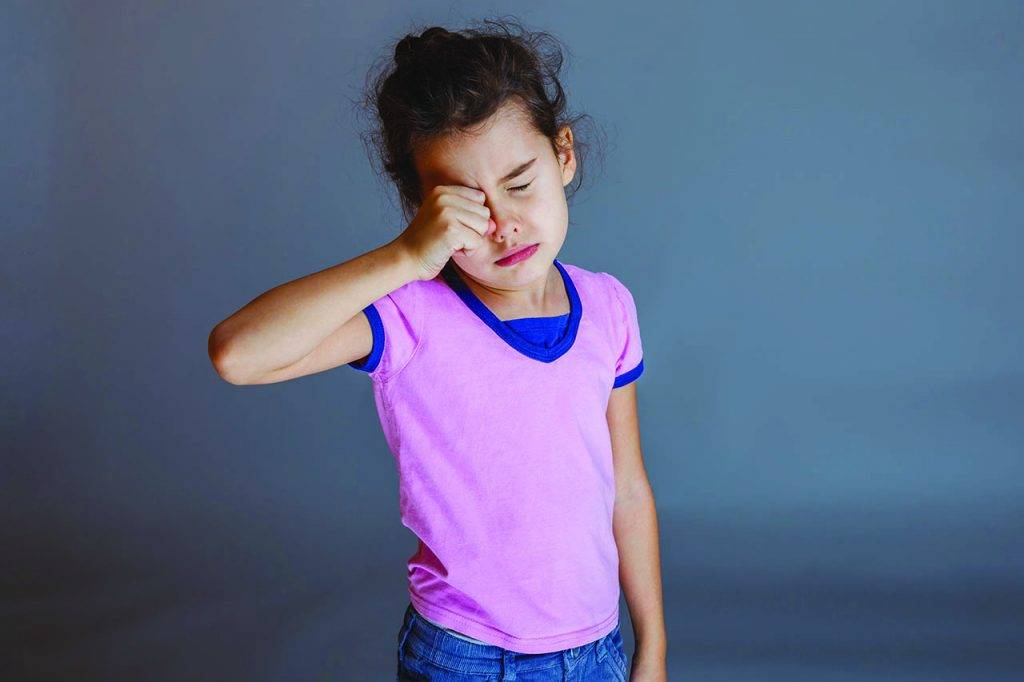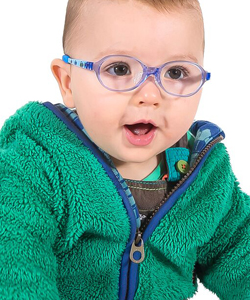Has your child been diagnosed with exophoria or esophoria?
Both of these may appear as an eye turn, and can be successfully treated with eyeglasses and/or vision therapy.
What is exophoria?
Exophoria occurs as a result of poor eye coordination, causing the eyes to drift outward, or one eye to drift away from the other.
Exophoria is generally noticed during near vision tasks, such as reading, computer use or homework.
Exophoria is also known as under-convergence and can be associated with convergence insufficiency.
If exophoria occurs when looking at distant objects, it is called divergence excess (DE).
What causes exophoria?
While the underlying cause is not clear, many experts believe that exophoria results when there are anatomical, mechanical, and innervation anomalies. These anomalies can cause difficulty with eye teaming and coordination, consequently resulting in an abnormal balance between convergence and divergence.
- Anatomical- due to eye position or size, orbit size or shape, tissue within the orbit, etc.
- Mechanical- due to weakness of the extraocular muscles
- Innervation- due to compromised nerve impulses that enable eye movement
Some experts believe that exophoria occurs during near vision tasks because the eyes are required to move from word to word, which may place strain on an eye with weak muscles. Therefore, exophoria may result from the visual strain placed on the non-dominant eye— causing it to drift outward.
Symptoms of exophoria
Exophoria typically presents in childhood or high school. The most common symptom is an outward eye turn that occurs when the eye is covered.
- Double vision
- Blurred vision
- Words appear to move on a page
- Eyestrain
- Headaches
- Difficulty concentrating
- Difficulty with reading fluency
- Reduced comprehension
If your child suffers from any of these symptoms, contact a vision therapy eye doctor to start the treatment they need for clear and comfortable vision.
SEE RELATED: Eye Conditions That Cause Strabismus
What is the difference between exophoria and exotropia?
Both conditions cause the eyes to drift outward, and away from the nose, and may appear as convergence insufficiency when viewing near objects. However, exophoria and exotropia are different vision conditions.
- Exophoria- the outward eye misalignment is only temporary and occurs when the child is tired or stressed, or during close vision tasks when the eyes are unable to move across the line of text smoothly due to eye teaming difficulties.
- Exotropia- the outward eye movement is more frequent and noticeable. This is a type of strabismus (eye turn) that tends to occur regularly, and is easily noticed by parents or teachers when the one eye points outwards.
How is exophoria diagnosed?
Through a comprehensive eye and vision evaluation, your eye doctor will be able to determine the presence of exophoria using specialized tests. The outward eye movement is noticed during the cover test, when one eye is covered.
If you think your child may be showing signs of an eye turn, it is crucial that you schedule an appointment with an eye doctor experienced in children’s vision and vision therapy.
Children with undiagnosed exophoria will struggle with academic difficulties and may be mislabeled or misdiagnosed with:
How is exophoria treated?
Exophoria treatment depends on the severity of the eye turn and the child’s symptoms.
1. Eyeglasses
Eyeglasses can impact the position of the eye, especially if the child has a high optical prescription or a significant difference of prescription between the two eyes. Eyeglasses may include a prism to allow for the eye turn. However, while eyeglasses are prescribed to correct the presenting refractive error, they cannot fully treat the exophoria.
2. Vision therapy
Vision therapy is usually essential for the treatment of exophoria. Vision therapy may involve the use of specialized tools such as prisms, a series of eye exercises, computer or virtual reality games and vectograms.
Exophoria treatment focuses on improving convergence to enable proper eye alignment.
Eye exercises will improve convergence skills by strengthening:
- Eye coordination
- Convergence ability
- Divergence ability
- Switch from convergence to divergence
Please note: Exophoria may reoccur after treatment if your child’s eyes feel strained or from an illness. If recurrence is noticed, inform your eye doctor— additional treatments will correct the problem again.
What is esophoria?
Esophoria, like exophoria, is a condition that causes one eye to turn when covered. The difference between the two conditions involves the direction in which the eye drifts or turns. Esophoria causes an inward eye turn, as the eye drifts toward the nose.
Esophoria usually occurs due to over stimulation of the focusing lens during close vision tasks.
Symptoms of esophoria
Esophoria typically presents in childhood or high school. The most common symptom is an outward eye turn that occurs when the eye is covered.
- Fatigue
- Tired eyes
- Eyestrain
- Poor concentration
- Double vision
- Headache
- Difficulty reading
If your child suffers from any of these symptoms, contact a vision therapy eye doctor to start the treatment they need for clear and comfortable vision.
How is esophoria treated?
Esophoria treatment depends on the severity of the eye turn and the child’s symptoms.
1. Eyeglasses
Eyeglasses can impact the position of the eye, and may include a bifocal to support focusing skills and thereby prevent the eye from turning.
However, while eyeglasses are prescribed to correct the presenting refractive error, they cannot fully treat the esophoria.
2. Vision therapy
Vision therapy is essential for the treatment of esophoria.
Vision therapy may involve the use of specialized tools such as prisms, a series of vision therapy exercises, computer or virtual reality games and vectograms.
Esophoria treatment focuses on improving focusing and divergence abilities to enable proper eye alignment.
Eye exercises will improve focusing skills by strengthening:
- Binocular coordination
- Convergence ability
- Divergence ability
- Switch from divergence to convergence
Please note: Esophoria may reoccur after treatment if your child’s eyes feel fatigued or due an illness. If recurrence is noticed, inform your eye doctor— additional treatments will correct the problem again.
The earlier a vision problem is detected, the sooner your child will achieve clear and comfortable vision— necessary tools for academic success!
LEARN MORE: Guide to Eye Turns
Schedule an eye exam with an eye doctor near you so that your child’s vision can be evaluated and treated – it might be the answer you have been looking for.
If your child is showing signs of an eye turn, or complains of eye strain or difficulties in reading and learning, schedule an eye exam for a comprehensive evaluation of your child’s vision and ocular health.









